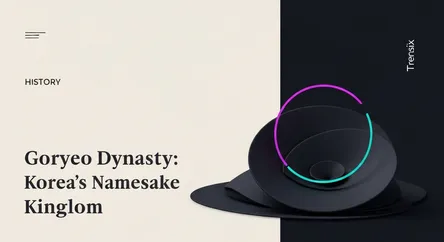History
Goryeo Dynasty: Korea's Namesake Kingdom

Discover the Goryeo Dynasty (918-1392), the kingdom that unified Korea, championed Buddhism, and gave the nation its modern name.
What is it?
The Goryeo (or Koryo) Dynasty was a Korean kingdom established in 918 by King Taejo Wang Geon. It unified the Later Three Kingdoms of the Korean Peninsula, ruling for 474 years until 1392. The name "Goryeo" is the origin of the modern English name "Korea." This period is recognized for establishing a centralized government, blending indigenous traditions with influences from China, and fostering a unique Korean identity. Buddhism was the state religion, leading to the construction of numerous temples and monasteries and influencing art and culture profoundly.
Why is it trending?
The Goryeo Dynasty is a period of immense cultural and technological achievement. It is renowned for the creation of exquisite celadon pottery, a type of green-glazed ceramic praised for its elegant designs. A monumental achievement was the invention of the world's first movable metal type for printing, predating Gutenberg's press by over 200 years. Another significant cultural treasure from this era is the Tripitaka Koreana, one of the most complete collections of Buddhist scriptures, meticulously carved onto more than 80,000 wooden blocks. These remarkable contributions to world heritage continue to be subjects of study and admiration.
How does it affect people?
The legacy of the Goryeo Dynasty is deeply embedded in modern Korean identity. It achieved what historians consider a "true national unification" by integrating the ruling classes of different kingdoms. This fostered a cohesive identity that has persisted for centuries. The dynasty's artistic traditions, particularly in ceramics, continue to influence contemporary artists worldwide. Furthermore, the political and social structures established during this era laid the groundwork for the subsequent Joseon Dynasty and shaped the Korean peninsula's cultural and philosophical landscape, blending Buddhist and Confucian traditions that are still felt in Korea today.